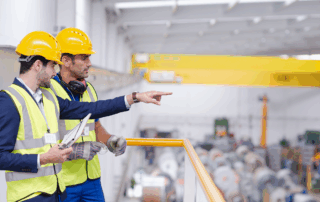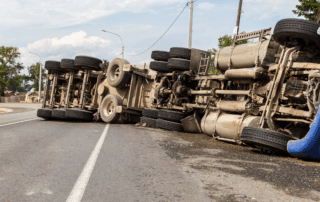Properly trained personnel are essential for well control activities. Well control consists of two basic components: an active component of monitoring the pressure of the drilling fluid, and blowout preventers as a passive component.
The first line of defense in well control is to have sufficient drilling-fluid pressure in the well hole. During drilling, underground fluids such as gas, water or oil under pressure (the formation pressure) oppose the drilling-fluid pressure (mud pressure). If the formation pressure is greater than the mud pressure, there is possibility of a blowout.
Process: Blowout Prevention Program
Hazards
- Receiving injuries caused by loss of well control
Solutions
- Appropriate training for tasks performed. Example topics include:
- Causes of kicks, including detection
- Pressure concepts and calculations
- Well control procedures
- Gas characteristics and behavior
- Constant well control methods on bottomhole pressure
- Well control equipment
- Regulatory information
- Use of appropriate well control equipment including:
- Specification
- Installation
- Maintenance
Process: Monitoring and Maintaining Mud System
Each part of the mud system must function and be in good condition in order to maintain well control. If the mud level increases, it may be a sign that a kick is in progress. On some rigs there is a mud-float-level gauge which sounds an automatic alarm if the mud exceeds a pre-specified level.
Hazards
- Loss of well control (blowout)
Solutions
- Keep the mud circulating system in good working order.
- Periodically check and maintain the properties of the drilling fluid, including proper pit level.
- Properly train crew in monitoring and well control procedures.
- Maintain a properly functioning surface control system.
Process: Installing Blowout Preventers (BOPs)
The BOP, accumulator and choke manifold are installed by the rig crew after the surface casing is set and cemented. The accumulator and choke manifold that is set into place during rigging up needs to be hooked up and tested. The choke-line valve is used to redirect the mud from the wellbore to the choke manifold during a kick. The kill-line valve is used to direct drilling fluid to the BOP during a kick.
Hazards
- Being crushed by falling equipment if hoisting slings fail
- Being struck by, pinched by or caught between equipment during installation
Solutions
- Ensure workers stand clear of equipment being hoisted and that tag lines are used where appropriate.
- Coordinate hoisting tasks with rig crew.
- Inspect the hoisting slings for wear before any hoisting operation.
- Ensure all personnel wear proper personal protective equipment.
Contact INSURICA today to learn more about your oil and gas coverage options.
This is not intended to be exhaustive nor should any discussion or opinions be construed as legal advice. Readers should contact legal counsel or an insurance professional for appropriate advice. © 2022 Zywave, Inc. All rights reserved.
Source: Zywave, NFPA
About the Author
Share This Story
Related Blogs
OSHA Announces Top 10 Violations for 2025
OSHA recently revealed its top 10 most frequently cited standards in the 2025 fiscal year using preliminary data. This information is valuable for businesses of all kinds, as it helps them identify common exposures that affect their workforce and gives them the information they need to plan their compliance programs.
Cyber Hygiene for Schools: Teaching Digital Safety to Students
Cyber hygiene for schools is more important than ever in today’s digital learning environment. Teaching digital safety to students not only protects their personal information but also strengthens overall school cybersecurity. With increasing online access in classrooms, cyber hygiene for schools must become a routine part of curriculum planning and student behavior expectations.
Mental Health Benefits Go Mainstream: What Employers Need to Know
Once considered a niche offering or a reactive add-on, mental health benefits have now moved to the center of the employee experience. In 2025, nearly half of U.S. employers offer some form of mental health support beyond traditional EAPs—a sharp rise from just 30% in 2023. This shift isn’t just cultural; it’s strategic.








